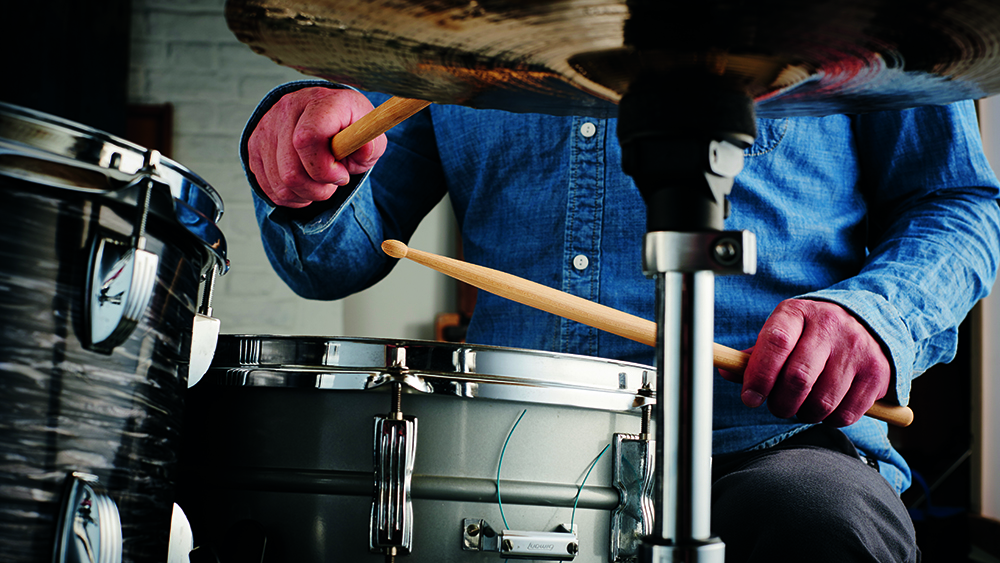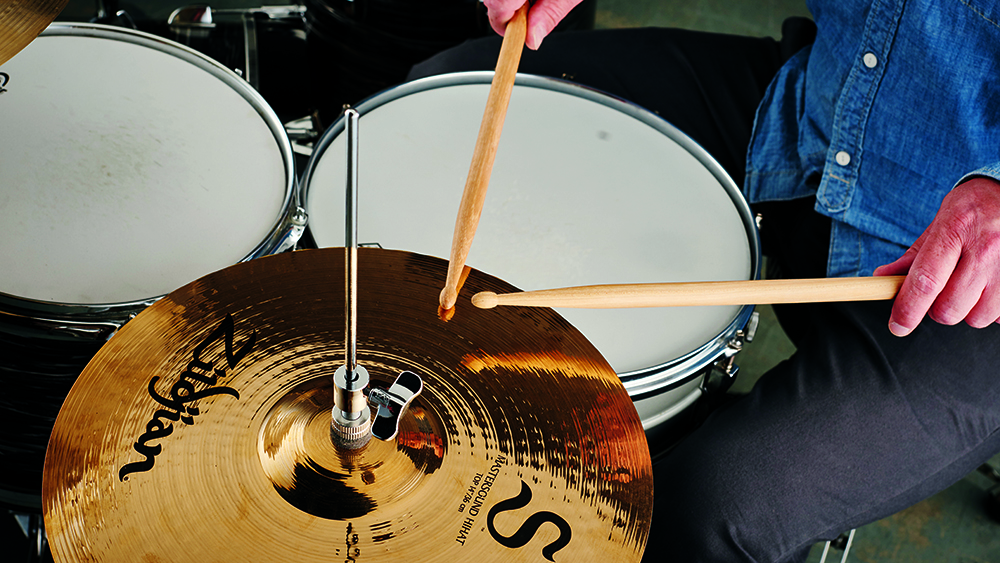Next level grooves part 2: hi-hat 'barks'
Add colour and bring emphasis to your grooves

After getting to grips with some essential grooves it can be time to focus on developing some of the embellishments and variations heard in the playing of more experienced drummers.
So in our next level groove series, we're lifting the lid on some of the concepts that you may have heard in the playing of your favourite drummers and offering some ways for you to take your own grooves to the next level.
Short open hi-hats are often referred to as hi-hat barks and they frequently appear in funk grooves featuring 16th-notes on the hi-hats. Their use also requires two qualities; the ability to close the hi-hats one 16th-note after they’ve been opened and being able to do this when either hand hits the hi-hats. The following examples should help develop the ability to do this at various points within a groove.
Note that the ‘+’ and ‘-’ signs denote exactly where the left foot will open and close the hi-hats respectively. And with short durations such as these it can be easier to play the left foot ‘heel up’.
1. ‘Bark’ the hi-hat on the fourth sixteenth note of beat two
Example 1 features an open hi-hat note on the fourth 16th-note of beat 2. This means it will be played in the left hand, while the left foot will step the downbeat of beat 3.

2. This time we add two barks to the hi-hat pattern
Example 2 adds another left hand open note, this time on the second 16th-note of beat 2. To play this the feet will be playing four alternating single-strokes from the last 16th-note of beat 2.

3. Here, our second bark lasts for an eighth note
Example 3 introduces the challenge of playing open hi-hats of two different durations with our familiar 16th-note on the last 16th-note of beat 2 and an eighth note on the ‘&’ of beat 3.
Want all the hottest music and gear news, reviews, deals, features and more, direct to your inbox? Sign up here.

4. The bark is moved in front of the first backbeat
A new ingredient is added in Example 4 in the shape of an open hi-hat before the first backbeat. Once again, because it falls on an upbeat 16th-note this will fall in the left hand.

MusicRadar is the number one website for music-makers of all kinds, be they guitarists, drummers, keyboard players, DJs or producers...
- GEAR: We help musicians find the best gear with top-ranking gear round-ups and high-quality, authoritative reviews by a wide team of highly experienced experts.
- TIPS: We also provide tuition, from bite-sized tips to advanced work-outs and guidance from recognised musicians and stars.
- STARS: We talk to musicians and stars about their creative processes, and the nuts and bolts of their gear and technique. We give fans an insight into the craft of music-making that no other music website can.

